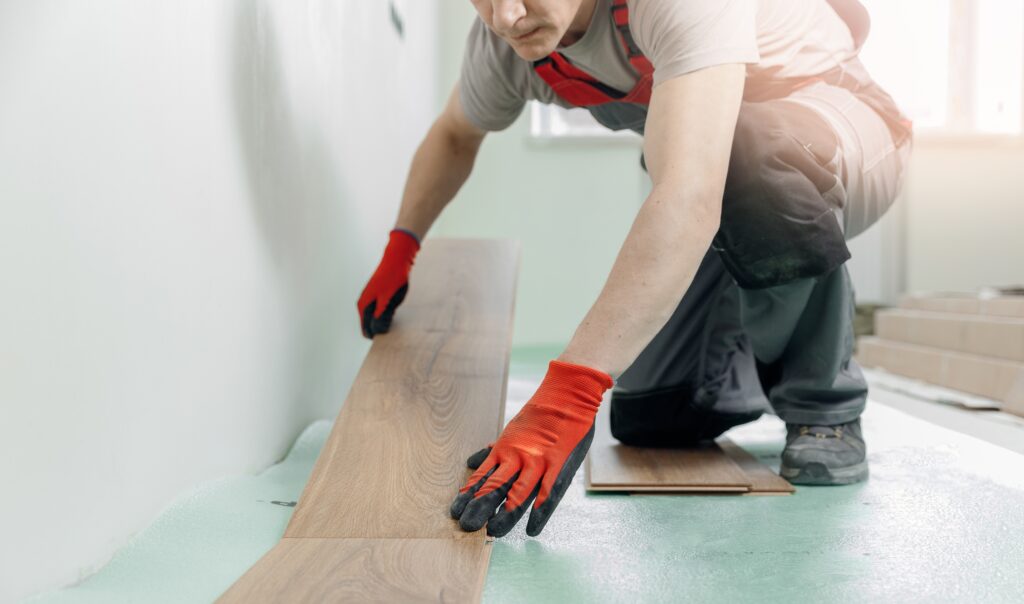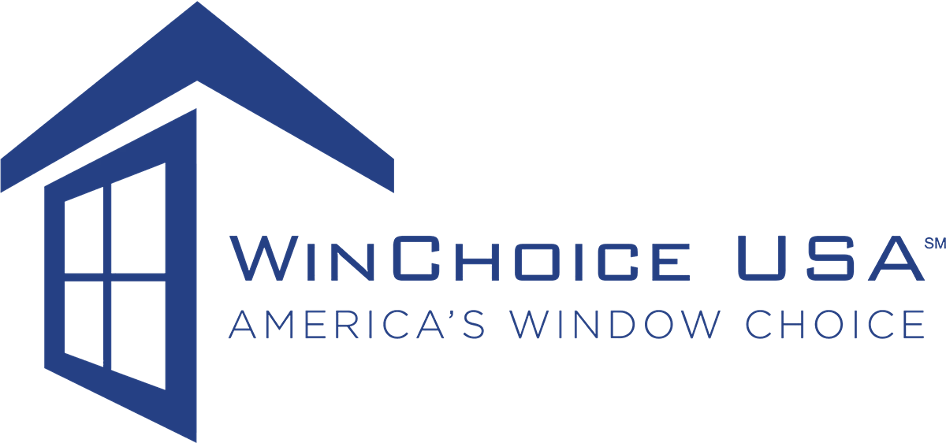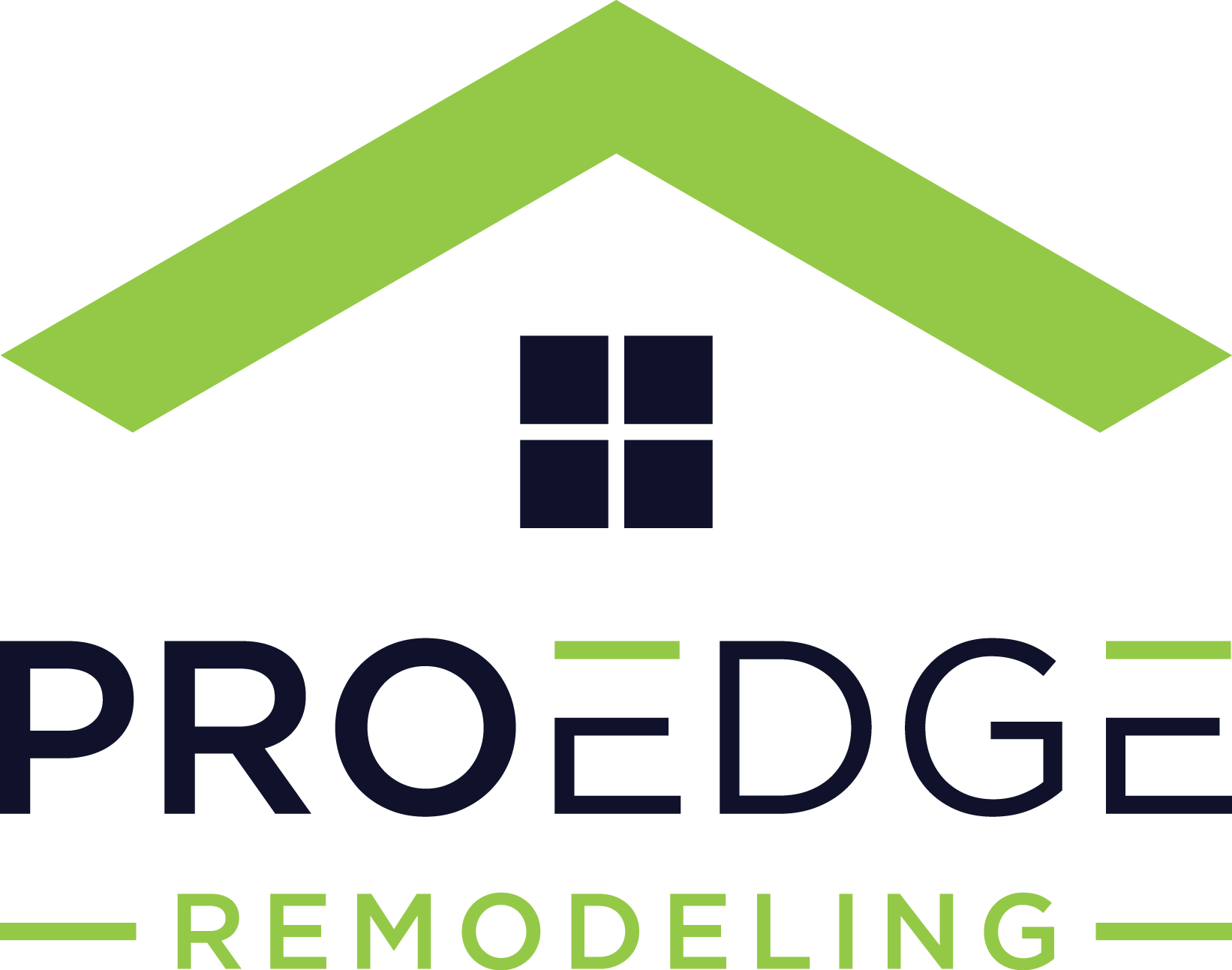Floorboard Installation Cost Guide

Installing new flooring is one of the most effective ways to improve both the look and function of your home. In addition to visual appeal, quality flooring can raise property value, improve insulation, and create a more comfortable living space.
Whether you’re updating a single room or tackling a full-home renovation, floorboard installation costs in 2025 can vary widely. Factors such as material type, installation method, room size, and local labor rates all influence the total price. This guide provides current pricing data and key cost considerations to help you make informed decisions for your project.
Table of Contents
Average Floorboard Installation Cost
In 2025, the national average cost to install new flooring ranges from $3 to $22 per square foot, including both materials and labor. This broad range reflects the wide variety of flooring types, quality levels, and installation complexities available to homeowners.
For a typical 320-square-foot living room, total costs average around $4,000. However, the final price can be as low as $960 for basic materials and straightforward installs, or more than $7,000 for high-end flooring and labor-intensive projects.
Cost Breakdown
For most flooring projects, about 60% of your budget typically goes toward labor costs, with the remaining 40% covering materials. However, these percentages can shift based on your choice of flooring type and installation complexity. Premium materials like exotic hardwoods might reverse this ratio, with materials representing 60-70% of total costs.
The table below provides cost ranges for typical home flooring projects of different sizes:
Project Size |
Low-End Cost |
Average Cost |
High-End Cost |
200 sq. ft. |
$600 |
$2,500 |
$4,400 |
500 sq. ft. |
$1,500 |
$6,250 |
$11,000 |
1,000 sq. ft. |
$3,000 |
$12,500 |
$22,000 |
These figures represent full installation costs, including materials, labor, and basic preparation. Keep in mind that special circumstances may require additional work, potentially increasing your overall expenditure.
Labor costs typically range from $3 to $10 per square foot, with the national average hovering around $4 to $8 per square foot depending on your location and installation complexity. Urban areas typically command 15-25% higher rates than rural regions due to higher overhead costs and living expenses. Coastal cities like New York, San Francisco, and Los Angeles generally have the highest installation costs, while midwestern and southern regions often feature more moderate pricing.
Cost by Floorboard Type
The material you choose for your new floor is perhaps the most significant factor in determining your total project cost. Each flooring type offers distinct advantages in terms of appearance, durability, maintenance requirements, and price point. Let’s explore the most popular options and their associated costs.
Hardwood Flooring
Hardwood flooring remains one of the most popular and valuable flooring investments. In 2025, hardwood flooring costs range from $6 to $25 per square foot installed, including both materials and labor.
Solid vs. Engineered Hardwood
Solid Hardwood
- Material cost: $4 to $15 per square foot
- Installation cost: $3 to $10 per square foot
- Total installed cost: $7 to $25 per square foot
- Lifespan: 30+ years (can be refinished multiple times)
Engineered Hardwood
- Material cost: $3 to $13 per square foot
- Installation cost: $3 to $10 per square foot
- Total installed cost: $6 to $23 per square foot
- Lifespan: 20-30 years (limited refinishing options)
Popular Wood Species Cost Comparison
Wood Species |
Material Cost (per sq ft) |
Installed Cost (per sq ft) |
Red Oak |
$2 to $6 |
$5 to $16 |
White Oak |
$3 to $10 |
$6 to $20 |
Maple |
$3 to $10 |
$6 to $20 |
Hickory |
$3 to $7 |
$6 to $17 |
Cherry |
$4 to $7 |
$7 to $17 |
Brazilian Walnut |
$5 to $10 |
$8 to $20 |
Mahogany |
$6 to $8 |
$9 to $18 |
Installation methods also affect cost, with nail-down, glue-down, and floating options available. Thicker planks (typically ¾”) cost more but can be refinished multiple times, extending their lifespan significantly.
Laminate Flooring
Laminate flooring offers the look of hardwood at a more budget-friendly price point. It’s more resistant to scratches and dents than some hardwoods, making it ideal for high-traffic areas and homes with children or pets.
In 2025, the basic cost to install laminate flooring ranges from $6.69 to $11.43 per square foot, though this can vary based on site conditions and specific options.
Laminate Flooring Costs Breakdown
- Material cost: $1 to $5 per square foot
- Installation cost: $2 to $8 per square foot
- Total installed cost: $3 to $13 per square foot
- Lifespan: 15-25 years
The average laminate flooring project costs about $3,000 with labor included, or approximately $3 to $13 per square foot. For a 1,000-square-foot installation, homeowners typically spend between $3,000 and $13,000.
Laminate Quality Grades
Laminate flooring is rated using AC (Abrasion Class) ratings that indicate durability:
AC Rating |
Recommended Use |
Price Range (per sq ft) |
AC1 |
Bedrooms, closets |
$1-$2 |
AC2 |
Living rooms, dining rooms |
$2-$3 |
AC3 |
High-traffic residential, light commercial |
$2.50-$4 |
AC4 |
Commercial spaces, high-traffic areas |
$3-$5 |
AC5 |
Heavy commercial use |
$4-$7 |
Installation complexity affects pricing significantly. Simple rooms with basic layouts cost less to install than spaces with complex cuts or patterns. Removing old flooring adds approximately $70 per hour or $400 to $600 per 200 square feet to your project cost.
Vinyl Plank Flooring
Vinyl plank flooring has surged in popularity due to its waterproof properties, durability, and realistic appearance. It’s particularly well-suited for bathrooms, kitchens, and basements.
Vinyl plank flooring materials cost between $2 and $7 per square foot, with premium options reaching up to $15 per square foot. Professional installation adds approximately $1.50 to $3.00 per square foot.
Vinyl Plank Types and Costs
Standard Vinyl Plank (SVP)
- Material cost: $1.50 to $4 per square foot
- Installation cost: $1.50 to $3 per square foot
- Total installed cost: $3 to $7 per square foot
- Lifespan: 10-15 years
Luxury Vinyl Plank (LVP)
- Material cost: $2.50 to $7 per square foot
- Installation cost: $1.50 to $3 per square foot
- Total installed cost: $4 to $10 per square foot
- Lifespan: 15-25 years
Stone Polymer Composite (SPC)
- Material cost: $3 to $10 per square foot
- Installation cost: $1.50 to $3 per square foot
- Total installed cost: $4.50 to $13 per square foot
- Lifespan: 20+ years
Installation methods for vinyl flooring include floating (click-lock), glue-down, and peel-and-stick options. Floating floors using click-and-lock systems are typically easier to install and cost less in labor than glue-down methods.
Bamboo and Cork
Eco-friendly alternatives like bamboo and cork have become increasingly popular choices for environmentally conscious homeowners.
Bamboo Flooring
Bamboo flooring installation typically costs between $7 and $17 per square foot installed. The two most common installation methods are floating installation ($5 to $7 per square foot) and glue/nail installation ($8 to $10 per square foot).
Types of Bamboo Flooring:
Bamboo Type |
Material Cost (per sq ft) |
Installed Cost (per sq ft) |
Engineered Bamboo |
$2 to $6 |
$5 to $13 |
Horizontal Bamboo |
$2 to $6 |
$5 to $13 |
Vertical Bamboo |
$2 to $7 |
$5 to $14 |
Strand-Woven Bamboo |
$3 to $10 |
$7 to $19 |
On average, homeowners pay between $1,400 and $3,200 to install bamboo flooring in a 200-square-foot room. Labor costs typically range from $30 to $45 per hour, with additional expenses for subfloor preparation and old flooring removal.
Cork Flooring
Cork flooring is another eco-friendly option that provides natural insulation and a comfortable surface underfoot.
- Material cost: $3 to $8 per square foot
- Installation cost: $3 to $5 per square foot
- Total installed cost: $6 to $13 per square foot
- Lifespan: 10-25 years (requires resealing every 3-5 years)
Factors That Affect Floorboard Installation Cost
Beyond the choice of materials, several key variables can significantly impact your flooring project’s bottom line. Understanding these factors beforehand helps prevent budget surprises and allows for more accurate cost estimation. From room complexity to subfloor conditions, each element plays a role in determining your final investment.
Room Size and Layout
Larger rooms require more materials and labor, increasing overall costs. However, larger projects may benefit from bulk pricing, potentially reducing the per-square-foot cost. Complex room layouts with numerous corners, closets, or islands require more cuts and waste, increasing both material needs and labor time.
Subfloor Condition
The condition of your subfloor significantly impacts installation costs. Repairs to extensively rotted joists can cost an additional $40 to $60 per square foot, while basic subfloor repairs range from $900 to $3,000.
Common subfloor issues include:
- Uneven surfaces
- Moisture damage
- Squeaky or loose boards
- Mold or mildew presence
Removal of Old Flooring
Removing existing flooring is usually charged by the square foot. Carpet removal costs approximately $1.00 to $1.50 per square foot, while more difficult materials like glue-down flooring or ceramic tile can cost $2.00 to $4.00 per square foot to remove.
Geographic Location
Labor rates vary significantly by region. Metropolitan areas typically command higher installation rates than rural locations due to higher costs of living and operating expenses for contractors.
Additional Materials
Beyond the flooring itself, your project may require:
- Underlayment: $0.30 to $1.00 per square foot
- Moisture barriers: $0.50 to $1.50 per square foot
- Adhesives: $25 to $100 per container
- Transition strips: $2 to $30 each
- Baseboards: $1 to $3 per linear foot
DIY vs. Professional Installation Costs
While DIY offers potential cost savings, professional installation provides expertise and warranty protection. Your choice should balance budget considerations with your skill level, available time, and the complexity of your specific project.
DIY Installation: What You Need to Know
DIY installation can significantly reduce your project cost, eliminating labor expenses that typically account for 60% of total installation costs.
Potential savings: $3-$10 per square foot (varies by flooring type)
Required Tools and Equipment
Installing flooring yourself requires investing in or renting several specialized tools. Before starting your DIY project, make sure you have access to the following equipment:
- A suitable saw (circular, miter, or table saw depending on your flooring type)
- Essential measuring tools including tape measure, square, and chalk line
- For nail-down installations, hammers, nail sets, or pneumatic nailers
- Trowels and adhesive spreaders if you’re using glue-down methods
- Spacers, tapping blocks, and pull bars for floating floors
- Safety equipment including eye protection, knee pads, and gloves
Tool costs can range from $200 for basic equipment to over $1,000 for professional-grade tools. Rental options are available for specialized equipment like flooring nailers, which can help reduce your upfront investment.
Important DIY Considerations
Before deciding to tackle installation yourself, consider these important factors:
- Experience level required varies significantly by flooring type, with laminate being most DIY-friendly and hardwood typically most challenging
- Some manufacturer warranties may be invalidated by DIY installation, potentially affecting your coverage
- Project timeline is typically 2-3 times longer than professional installation
- Mistakes can be costly and difficult to correct after installation is complete
- Complex rooms or special installation patterns significantly increase difficulty
Professional Installation: Benefits and Costs
Professional installation ensures quality results, proper techniques, and often includes warranties on workmanship.
Labor costs by flooring type:
- Laminate: $3-$7 per square foot
- Vinyl plank: $1-$6 per square foot
- Engineered wood: $3-$10 per square foot
- Hardwood: $3-$15 per square foot (higher for custom patterns)
Benefits of professional installation:
- Expertise in subfloor preparation and assessment
- Proper handling of materials and acclimation
- Efficient execution with professional tools
- Knowledge of industry best practices
- Warranty coverage for installation defects
- Proper disposal of old materials
Professionals can typically complete in days what might take a DIY enthusiast weeks to finish. They also bring specialized knowledge about moisture testing, expansion requirements, and transition details that can extend your floor’s lifespan.
Tips to Save Money on Installation
From timing your materials purchases during sales events to considering alternative installation approaches, these money-saving strategies help maximize value while staying within budget constraints.
Buying in Bulk or During Sales
Many flooring retailers offer significant discounts for larger purchases or during seasonal sales events. Planning your purchase around major holiday sales (Black Friday, Memorial Day, Labor Day) can save 10-25% on materials.
Choosing Mid-Range Materials
Mid-range flooring options often provide the best balance of quality and affordability. They typically offer comparable durability to high-end options at a more reasonable price point.
Getting Multiple Quotes
Always obtain at least three quotes from reputable contractors before making a decision. This helps ensure you’re getting a fair price and allows you to compare service offerings between companies.
Installing in Off-Peak Seasons
Flooring contractors tend to be busier in the fall before the holidays. Scheduling your installation during another time of year during their slow season may help you secure better pricing.
Doing Partial DIY
Consider a hybrid approach where you:
- Remove old flooring yourself
- Handle furniture moving
- Purchase materials separately
- Hire professionals for the technical installation
This approach can save 15-30% on total project costs while ensuring proper installation.
Common Hidden Costs to Watch For
Flooring projects often come with unexpected expenses that can catch homeowners by surprise if not accounted for in advance. Being aware of these potential additional costs helps create a more comprehensive and realistic budget. From preparation work to finishing touches, these elements can add substantially to your bottom line.
Disposal of Old Flooring
Removing old flooring costs approximately $0.70 to $1.60 per square foot for carpet, with higher rates for harder materials like tile or hardwood. Some contractors include removal in their quotes, while others charge separately.
Furniture Removal and Return
Moving furniture out of the installation area typically costs $25 to $75 per room if not included in the installation quote. Heavy items like pianos or antiques may incur additional charges.
Moisture Barriers or Subfloor Repairs
Water damage or moisture issues often aren’t apparent until old flooring is removed. Budget for potential subfloor repairs, which can add $2 to $10 per square foot to your project cost.
Baseboards and Trim Work
If your existing baseboards need to be removed and replaced or if new baseboards are required, this can add $1 to $3 per linear foot to your project cost.
Floor Leveling
Floor leveling costs average $3 to $5 per square foot, but if you need a completely new subfloor, this cost can increase to approximately $12 per square foot.
FAQs
How long does floorboard installation take?
Installation timelines vary based on several factors related to your specific project. Small rooms (under 200 sq. ft.) usually require 1-2 days for complete installation. Average living spaces (500 sq. ft.) typically take 2-4 days from start to finish. Whole-house installations (1,500+ sq. ft.) generally need 5-7 days for completion.
Several factors can extend these timeframes significantly. Complex patterns like herringbone or parquet require precise cutting and placement, potentially doubling installation time. Extensive subfloor preparation may add 1-3 days depending on the condition and repairs needed. Additionally, many flooring materials (especially hardwood) require 48-72 hours of acclimation in your home before installation can begin.
Can I install new boards over old flooring?
In some cases, installing over existing floors is possible, but several important considerations must be evaluated first. Installing over existing floors raises the overall floor height, potentially creating transition issues at doorways, affecting door clearance, and requiring adjustment of baseboards and trim. Underlying problems with the subfloor may remain unaddressed, creating future issues.
Some manufacturer warranties explicitly require removal of old flooring to remain valid, so check warranty terms before proceeding. Additionally, building codes in some areas restrict the number of flooring layers permitted for safety and structural reasons. While laminate and floating engineered wood can sometimes be installed over existing vinyl or well-adhered tile, professional assessment is recommended to ensure the existing floor provides a suitable foundation.
What’s the cheapest flooring option with a wood look?
Laminate flooring offers the most budget-friendly wood appearance, with materials starting around $1-$3 per square foot. Modern manufacturing techniques have dramatically improved laminate’s realism, with high-definition printing and textured surfaces that convincingly mimic genuine wood. Quality laminate can last 15-25 years in residential settings with proper care.
Vinyl plank flooring provides another economical option starting at $2-$5 per square foot for materials, with the added advantage of being waterproof. Higher-end laminates and luxury vinyl planks can convincingly mimic premium hardwoods while costing 50-70% less than the real thing, making them excellent choices for budget-conscious renovations that don’t compromise on appearance.
Conclusion
Floorboard installation costs can vary significantly depending on the materials you choose, the complexity of the job, and local labor rates. While most homeowners spend between $1,500 and $4,000 for a standard-sized room, smart planning and informed decisions can help you stay within budget without compromising on quality.
Mid-range materials paired with professional installation often strike the best balance between durability, appearance, and long-term value. Whether you prefer the classic warmth of hardwood, the resilience of laminate, the moisture protection of vinyl, or the sustainability of bamboo, your new floors will play a key role in your home’s comfort and style.
Before getting started, compare quotes from licensed contractors, review material pros and cons, and account for any necessary prep work. Small choices—like underlayment, trim, or layout—can have a major impact on both cost and performance over time.
Ready to move forward? Reach out to local flooring professionals today to get a customized quote and expert advice for your project.
Additional Flooring Resources

Anna has over six years of experience in the home services and journalism industries and serves as the Content Manager at MyHomePros.com, specializing in making complex home improvement topics like HVAC, roofing, and plumbing accessible to all. With a bachelor’s degree in journalism from Auburn University, she excels in crafting localized, comprehensive guides that cater to homeowners’ unique needs. Living on both coasts of the United States has equipped her with a distinctive perspective, fueling her passion for turning any house into a cherished home through informed, personalized decision-making.








